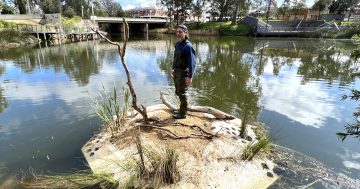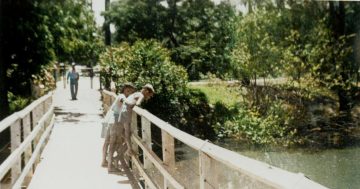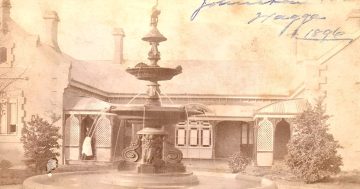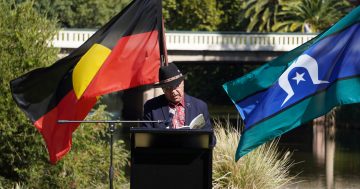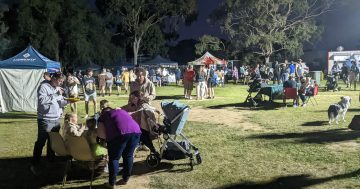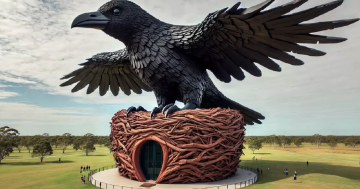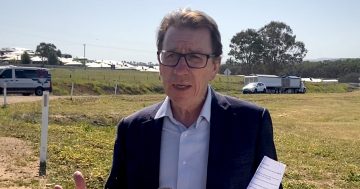
The original white “mother goose” left behind during the council’s rehoming program in 2021 has settled with three “new boys” (pictured). Photo: Anna Maskus.
Many Wagga residents have memories of the waterfowl of Wollundry Lagoon – whether those memories are fond is a different story.
Experiences vary from a relaxing stroll with the family, throwing some bread to the ducks – to screaming in terror as a two-foot-tall goose gives flapping, honking chase.
“They definitely spice up our morning walks,” one Gurwood Street resident said.
The geese have famously divided opinions in Wagga for decades.
In August 2021, the council removed all but one of the geese triggering widespread outcry and the subsequent return of some of the geese to the lagoon.
Esplanade resident Dr Sam Bowker was an outspoken critic at the time but now concedes that council was not using a euphemism when the geese were sent to “a farm”.
“I suspect the geese taken in 2021 may now be living on a property south of Wagga, which suggests the council’s story that ‘they had gone to live on a farm’ might have a bit more truth than the sceptics like myself had believed,” he said.
At the time former Mayor Greg Conkey said they were forced to remove the geese because of an epidemic of health issues caused by inappropriate feeding.
However small groups of geese had been quietly removed from the lagoon for more than a decade for health and environmental reasons.
Wagga City Council’s Plan of Management for Wollundry Lagoon ran from 2008 to 2013 and stated that the council aimed to “significantly reduce [introduced species of waterfowl] populations”.
It wasn’t until 2011 when the idea of re-homing the birds was floated that residents began to object.
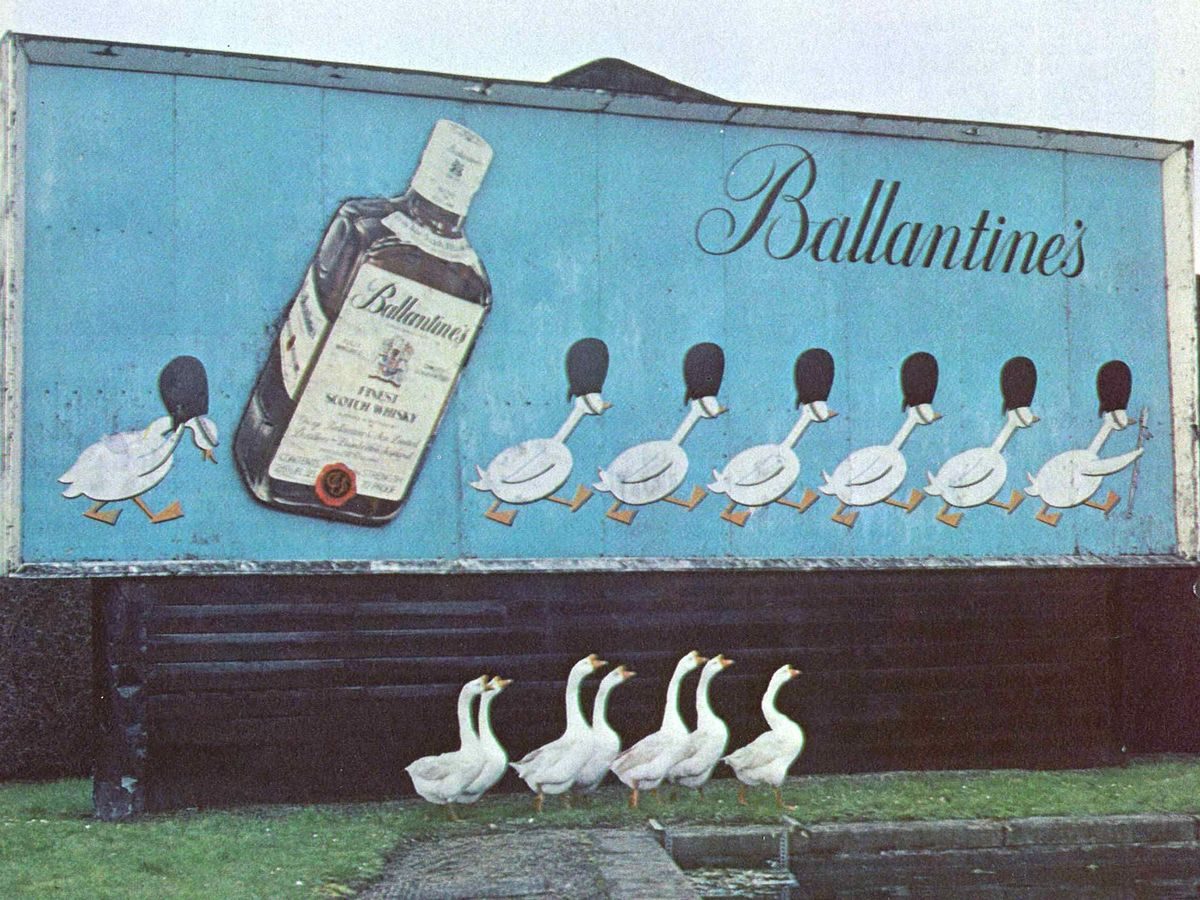
Patrolling their territory from 1959 until they were discharged in 2012, The Scotch Watch were the nightmare of any potential whiskey thief. Photo: Ballantine’s Whiskey.
The geese themselves have never been removed without a fight. Once they establish their territory, the 5-kg birds defend it fiercely.
For this reason, the avian assailants have been employed as ‘security guards’ worldwide.
A gaggle of geese dubbed “The Scotch Watch” patrolled 14 acres of warehouses in Dumbuck, Scotland, protecting 300 million pounds’ worth of whisky for more than 50 years.
In 1986 the United States Army employed 18 geese to safeguard radar and anti-aircraft equipment in West Germany. The geese were so successful that the army conscripted 900 more geese to serve in the region.
However some central Wagga residents are not fans of their feathered neighbours defending their lagoon and the occasional goose ambush is not the only reason the council removes the birds.
The council’s Plan of Management outlines the environmental issues caused by introduced species like ducks and geese.
Effluent from the geese flows directly into the lagoon causing nutrient enrichment, overgrowth and subsequent decay of plants and eventually acidification of the water – a process known in scientific circles as eutrophication.
The Plan also found the birds’ constant movement and foraging have caused soil compaction, which kills grass, leaves the bank prone to erosion and causes pollution from increased effluent runoff.
The council has undertaken revegetation of the shoreline, promoting areas where ducks and geese can forage and nest, simultaneously providing a filter to decrease the amount of runoff entering the lagoon.
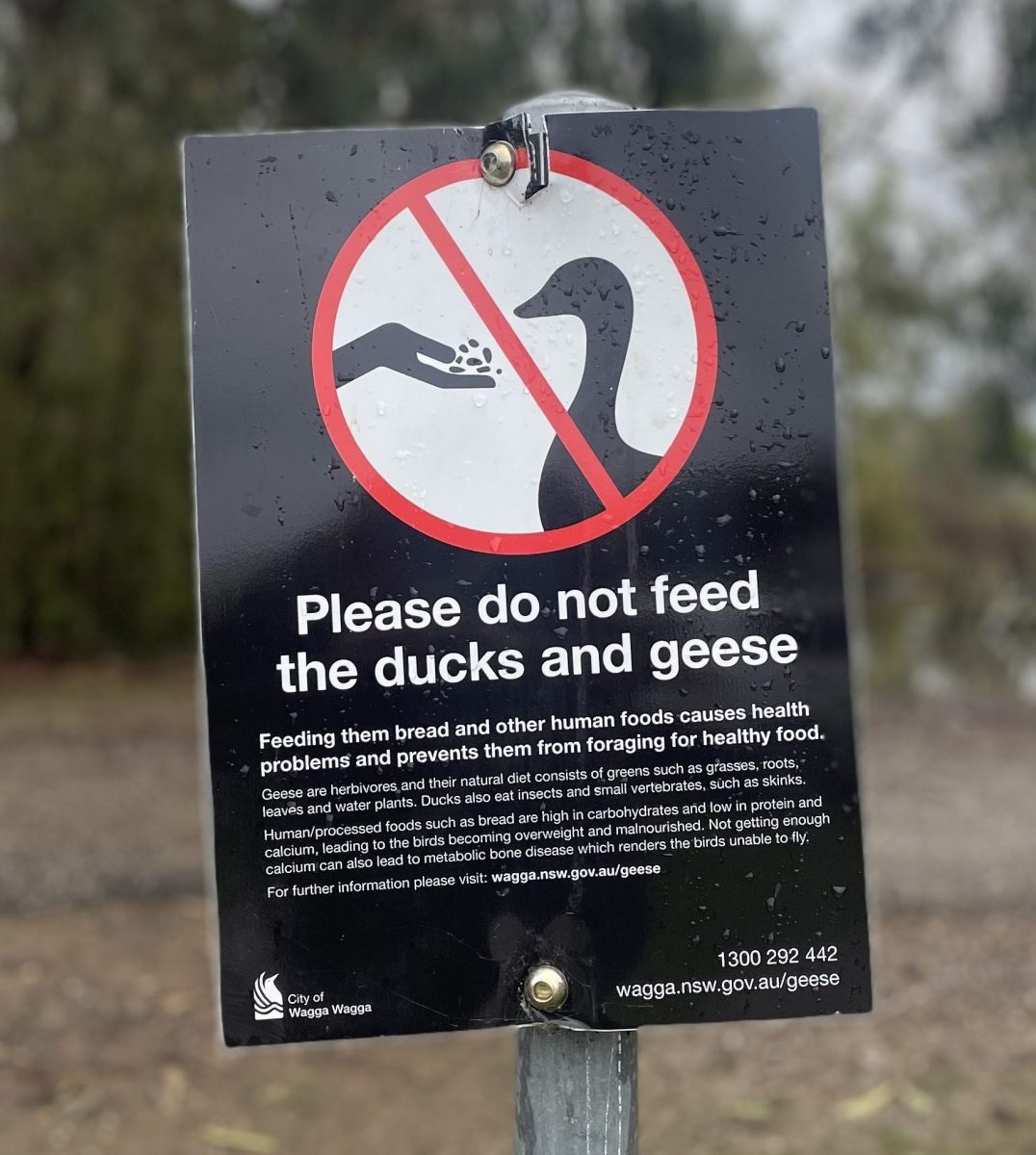
The new signs installed by Wagga City Council at various spots frequented by the waterbirds. Photo: Anna Maskus.
The geese provide “an opportunity for community interaction, but this is combined with a reluctance to manage the population,” according to the Plan.
After the public outcry in 2021, Wagga Council began a campaign to discourage feeding waterfowl in all areas of Wagga.
They also informed the community about the correct types and amounts of food for geese.
New signs have since been erected around the lagoon, and local business owner Nancy Martinez says she has not noticed people feeding the geese inappropriately.
Since taking up ownership of Ray Ray’s Diner in February this year, Ms Martinez has noted the joy the geese bring her customers.
“They do scare some people and they can be really loud, but overall they’re a great tourist attraction,” she said.
The Forsyth Street cafe has been a firm favourite with lagoon residents, both human and avian, for many years.
“The previous owners encouraged us to be cautious. We haven’t fed the geese at all and it’s only in the last month or so we’ve started to see them starting to cross the road again,” Ms Martinez said.
“The council obviously have their reasons for removing them, but they don’t cause any trouble for us.”
Dr Bowker said as far as he could tell “the Wollundry geese are happy and well”.







